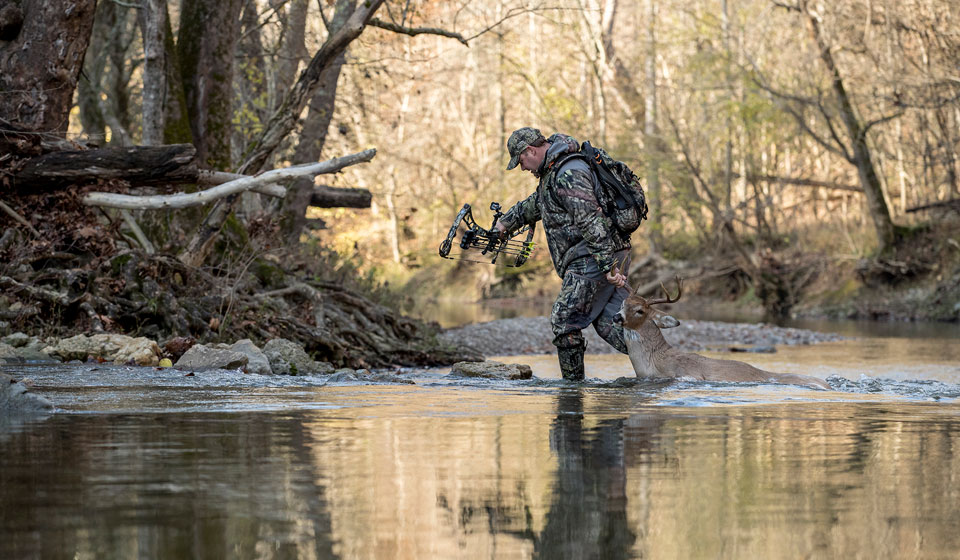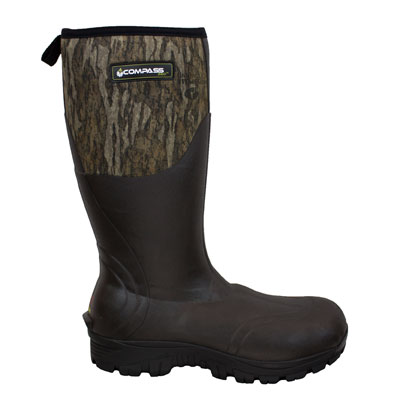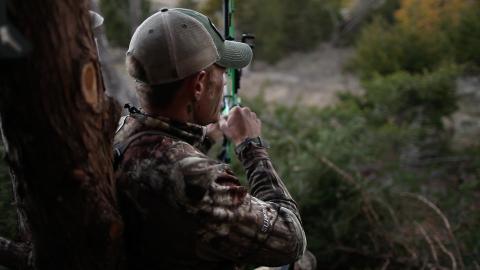Brooks Tiller
Dr. Brooks Tiller is an American Ninja Warrior competitor, adventure athlete, speaker and author. He has traveled the globe as a physical therapist, strength coach and movement specialist; coaching Olympic and professional athletes to increase their performance physically and mentally. Tiller lives in Tennessee with his wife and two children.

Excited for a long weekend of hunting, I headed straight to the woods after work. Having a few hours of light I decided to ease into a section of woods that I had not yet scouted.
When I came upon a small creek, with waterproof knee high boots on, I never checked up to find a dry crossing. I eased through the water thinking of a weekend in the woods. As I came upon a field, I sat down next to a tree to see if any deer would come out in the last hour before dark.
Watching a few does browse through the field as the sun set and the temperatures began to drop, I felt a chill in my left foot. As I tuned into my feet, I realized it wasn’t cold but wet. I began thinking that my feet must have gotten sweaty from the walk. Until I noticed a small hole in the seam of my left boot. After further examination, I realized that although the hole was not big, it was big enough to allow water to seep in while wading the creek. The cold wasn’t too bad, so I watched a young buck pester the does until they left the field before dark. I packed up and made my way back to camp, but this time I crossed the creek with a little more caution to avoid any more into my boot.
After shedding my clothes and getting some warm food in my belly, I settled down and got some sleep in preparation for a promising weekend of hunting. I got up early and set up in the stand well before the sun appeared to reveal a cold frosty morning. But before the sun was able to share its warmth, I began to feel my left foot colder than the rest of my body. I eased my hand down into my boot and surprised to find that my sock felt damp. I had not crossed any creeks on the way in, so it must be sweat. Reaching into my right boot, I noticed no moisture but instead felt the warmth.
The realization sat in that although I had set my socks out near the stove to dry, I had left my boots by the door. I had allowed my socks to dry overnight but had not done the same for my boot. And although the moisture was minimal, it was enough to bring on a chill.
Today's boots are great insulators, which helps to keep our feet so nice and toasty on the cold winter mornings. But if moisture gets into our boot and we do not take time and precautionary measures to eliminate the moisture, it will be insulated from the inside. And this will cause some certain discomfort as the temperatures drop.
Water is a great conductor. That is why we enjoy a warm shower or warm cup of joe after a cold day in the woods. But it can also increase the effect of cold.
 So to avoid having cold feet as I did, here are a few ways to ensure your boots are dry and ready even if they got wet the day before. If you have a boot dryer, then just place your boots there, turn it on, then kick back and relax. But if you are in camp or there is no boot dryer available, we do not have to spend the rest of the weekend with cold wet feet.
So to avoid having cold feet as I did, here are a few ways to ensure your boots are dry and ready even if they got wet the day before. If you have a boot dryer, then just place your boots there, turn it on, then kick back and relax. But if you are in camp or there is no boot dryer available, we do not have to spend the rest of the weekend with cold wet feet.
First, wipe the outside clean. Do not spray them off especially if you have a hole in your boot, trust me. (Yes, I am a slow learner.) Wiping away mud and drying the outside of the boot will ensure that no more moisture seeps into the boot as the inside dries.
Next, turn your boots upside down to dump any water or grime out. Then remove the insole if possible. Wipe away any dirt and mud, patting and squeezing with a towel. Set insoles aside in a dry spot.
Next, use a dry towel or spare clothing to soak up any moisture immediately. Get the major water out as you would if getting grease out of bacon. Finally, stuff newspaper or paper towels into the boot. Do not wad the paper too tight or cram them in too snug. Leave a little room for the paper to expand as it draws in the moisture. Change the paper often as it soaks up the moisture.
While a fan can help dry your boots, take extra caution when using heat. A hair dryer may seem logical, but extreme heat can cause the glue to break down leaving your waterproof, insulated boots more like a leaky sock. While placing your boots close to a fire could go up in smoke on you.
If you must put on damp boots, wear one pair of thin socks putting extra socks in your pack. Place newspaper in the boots to soak up water as you walk. Once you get into the stand, take your boots and wet socks off. Dry your feet thoroughly before putting on your warm dry socks. Then (quietly) shove newspaper into your boots. Sitting in your sock feet will be warmer than inside a cold wet boot.
If you’re backpacking with no place to keep your boots dry, turn them soles up to decrease the amount of rain and dew that will not settle inside. Boots can also be placed inside your pack or even carry a plastic bag to store or just cover your boots. Decreasing the chances of your boots getting waterlogged and making sure they stay dry is better than having to dry them out.




























